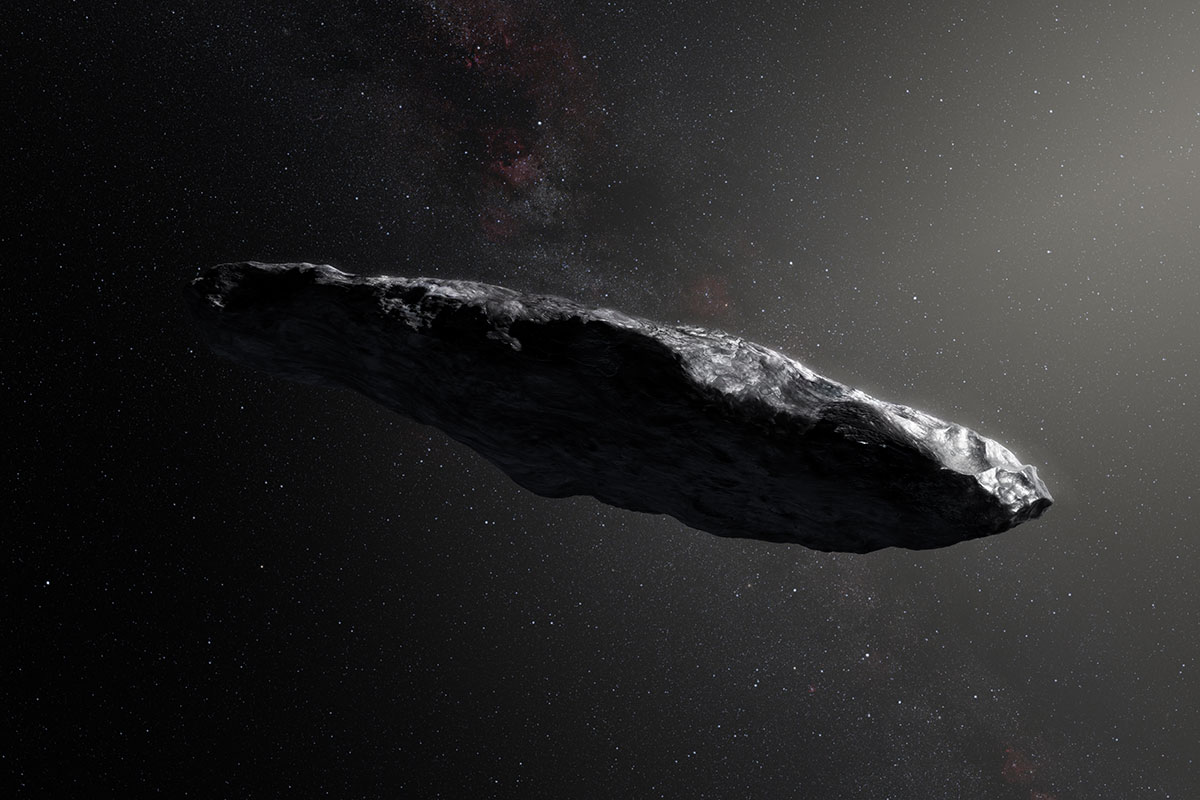1st Interstellar Visitor 'Oumuamua Is Actually Not That Special
In fact, there are likely trillions upon trillions of objects just like 'Oumuamua drifting through the Milky Way galaxy, Greg Laughlin, an astronomer from Yale University, said during a lecture here at the 233rd meeting of the American Astronomical Society. More precisely, he estimated that there are about 10^26 of them in our galaxy alone.
So, though 'Oumuamua may be the first and only interstellar visitor astronomers have spotted in the solar system, this kind of interstellar object may not be that rare, astronomers say. Rather, it's possible we just haven't seen them, because we haven't been looking hard enough. ['Oumuamua: The Solar System's 1st Interstellar Visitor Explained in Photos]

A new study from Harvard University suggests that about two 'Oumuamua-like objects swing past the sun every year. The paper, published Jan. 4 to the pre-print journal arXiv.org (and not yet peer-reviewed), offers a new way to learn about 'Oumuamua's composition and origin: by comparing the object to other comets and asteroids observed in the solar system. By factoring in the estimated density of interstellar comets, the researchers found that 'Oumuamua-like objects "collide with the sun every 30 years, while about two pass within the orbit of Mercury each year."
At its closest approach, on Sept. 9, 2017, 'Oumuamua was about 0.26 AU (astronomical units, or the average Earth-sun distance) away from the sun. Astronomers using the Pan-STARRS 1 telescope in Hawaii discovered the object about one month after its closest approach to Earth. Pan-STARRS 1 is tasked with searching for potentially hazardous asteroids near Earth.
Officially designated 1I/2017 U1, the space rock was given the Hawaiian nickname 'Oumuamua, meaning "scout" or "visitor from afar arriving first," according to the International Astronomical Union, which is in charge of naming bodies in space. But astronomers have yet to figure out exactly what 'Oumuamua is, because it has properties of both comets and asteroids.
"There's lots of mysteries over 'Oumuamua, but it doesn't appear that there's anything completely crazy," Laughlin said, adding that 'Oumuamua's discovery "implies that there's lots of them out there. The fact that Pan-STARRS was able to observe 'Oumuamua means that there are on the order of 10^26 such objects in our own galaxy floating freely."
Those objects have a combined mass of about 100 billion Earths, Laughlin said. To become an interstellar traveler, an object like 'Oumuamua could be slung out of its own solar system by getting a gravitational boost from a giant gas planet resembling those in our own solar system — Jupiter, Saturn, Uranus and Neptune.
Sign up for the Live Science daily newsletter now
Get the world’s most fascinating discoveries delivered straight to your inbox.
While Earth's sun may see an 'Oumuamua-like space rock swing by twice per year, 'Oumuamua "will never encounter another star," Laughlin said. "The odds of it coming close to another star are roughly 1 in every 10^14, 10^15 years, so those brief and exciting moments in September and October were wonderful for us, but they were really the time of 'Oumuamua's life."
Email Hanneke Weitering at hweitering@space.com or follow her @hannekescience. Follow us on Twitter @Spacedotcom and on Facebook. Original article on Space.com.

Hanneke Weitering is an editor at Liv Science's sister site Space.com with 10 years of experience in science journalism. She has previously written for Scholastic Classroom Magazines, MedPage Today and The Joint Institute for Computational Sciences at Oak Ridge National Laboratory. After studying physics at the University of Tennessee in her hometown of Knoxville, she earned her graduate degree in Science, Health and Environmental Reporting (SHERP) from New York University. Hanneke joined the Space.com team in 2016 as a staff writer and producer, covering topics including spaceflight and astronomy.










